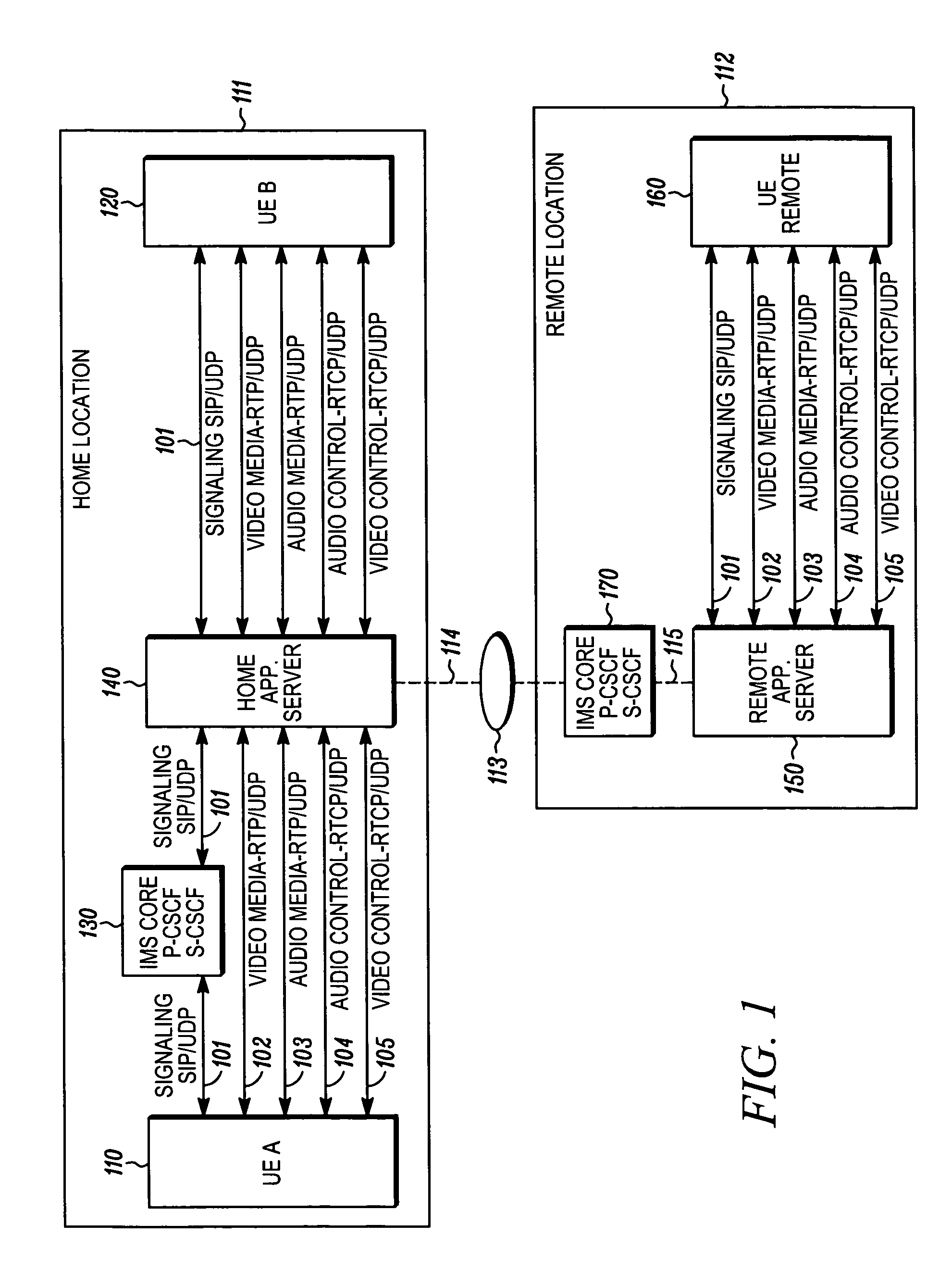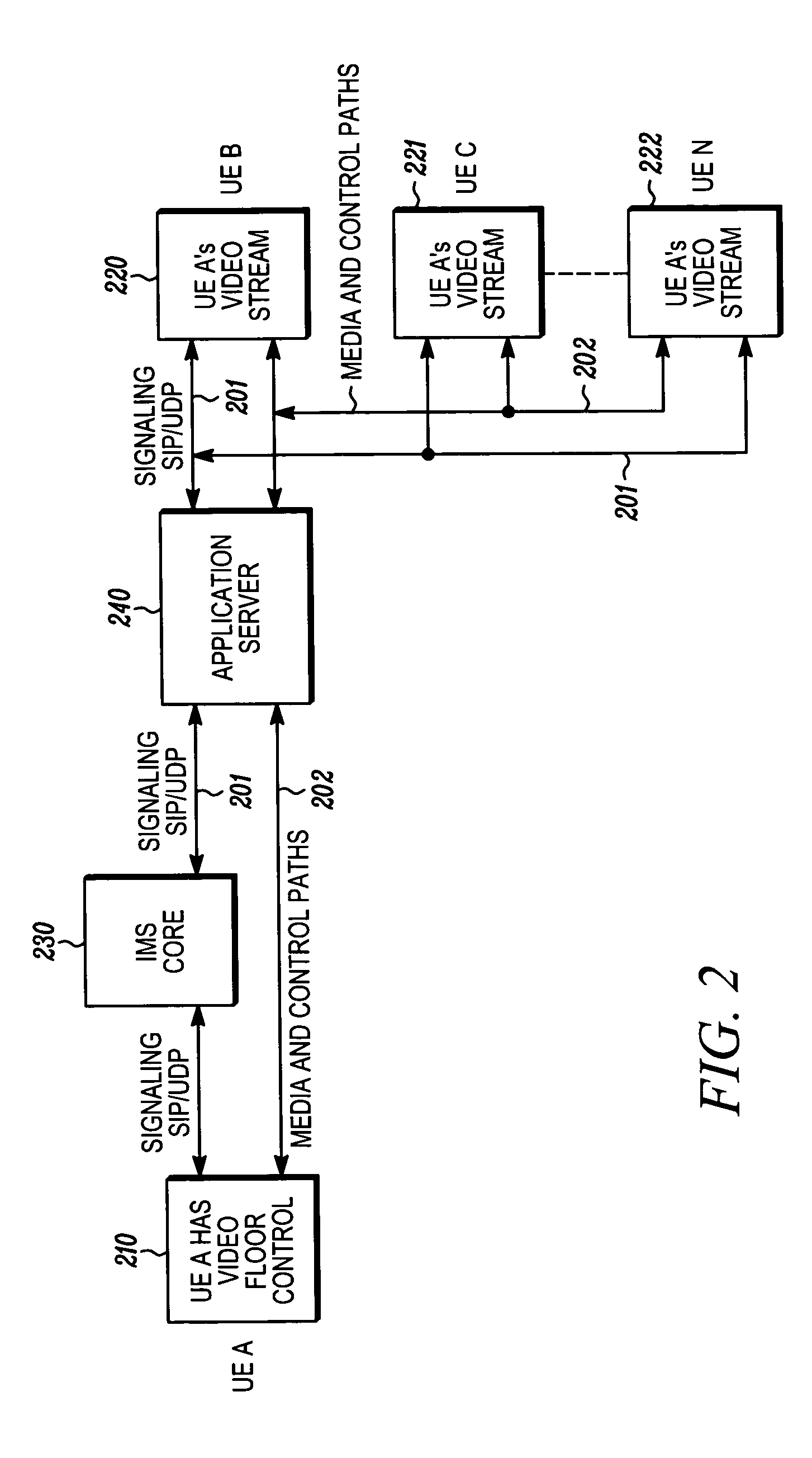Push to video service mode selection using device settings
a technology of video service mode and device settings, applied in the field of peertopeer or group calls, can solve the problem that present systems do not provide or support flexible multimedia services
- Summary
- Abstract
- Description
- Claims
- Application Information
AI Technical Summary
Benefits of technology
Problems solved by technology
Method used
Image
Examples
Embodiment Construction
[0014]In overview, the present disclosure concerns a PTV service mode associated with a peer to peer or group call between an originating wireless device and one or more target communication units operating in a communication system or including a Radio Access Network (RAN). One or more of the communication units can be, for example, a stationary or fixed wireless receiver, communications unit, User Entity (UE), or an originating wired device having an Internet connection, and the like which supports packet switched data communication. Further disclosed and described is a method and apparatus for selecting a Push to Video (PTV) service mode for use between the communication units based on a device setting such as a camera setting in any of the communication units or User Entities or Equipments (UEs) associated with the call.
[0015]In accordance with various exemplary embodiments, PTV services share some characteristics with “Push to Talk” (PTT) service for audio. PTV is a real-time d...
PUM
 Login to View More
Login to View More Abstract
Description
Claims
Application Information
 Login to View More
Login to View More - R&D
- Intellectual Property
- Life Sciences
- Materials
- Tech Scout
- Unparalleled Data Quality
- Higher Quality Content
- 60% Fewer Hallucinations
Browse by: Latest US Patents, China's latest patents, Technical Efficacy Thesaurus, Application Domain, Technology Topic, Popular Technical Reports.
© 2025 PatSnap. All rights reserved.Legal|Privacy policy|Modern Slavery Act Transparency Statement|Sitemap|About US| Contact US: help@patsnap.com



